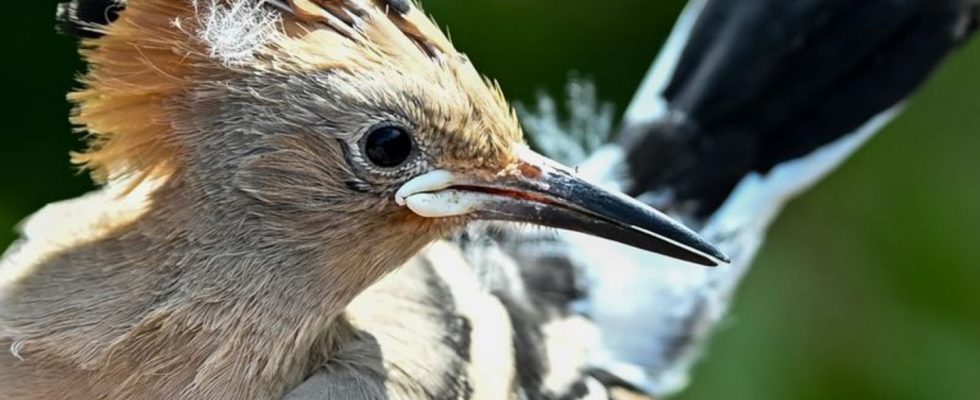Birds
Cainism: Hoopoe feeds chicks to siblings
A hoopoe is held in his hand by a bird ringer in Sielmann’s Döberitzer Heide natural landscape in order to be able to ring and weigh the chicks in the nest. photo
© Jens Kalaene/dpa
One looks in vain for deep sibling love in many animal species. Young hoopoes take this to the extreme: older chicks simply eat up the unpleasant younger competition.
When it comes to hoopoes, it is extremely risky to be one of the smaller siblings: the birds, which are also found here, often feed younger chicks to older ones in order to ensure their survival, reports a research team in the specialist journal “The American Naturalist”. The smallest ones therefore serve as a kind of living pantry for their cannibalistic siblings.
The hoopoe (Upupa epops) is a very striking bird with its ostentatious orange crest of feathers on its head and long, curved beak. Still common in some areas in the 19th century, it is now one of the endangered species Germany.
Every year from the beginning of March, hoopoes migrate to us from winter quarters on the western Mediterranean coast and south of the Sahara and look for caves to breed. During egg laying and initially also while raising chicks, the male is solely responsible for caring for them; the female then only leaves the nest rarely and briefly.
Sibling murder – not that rare
Many bird species are known to kill each other’s siblings, including certain eagles, pelicans and blue-footed boobies. This killing of a younger sibling by an older one is called Cainism. The unpleasant competition in the nest is usually only killed, not eaten. In such cases, the second-born is essentially a biological safety reserve: If the first child weakens or dies, the younger chick comes into play; In years when food is very rich, both young birds sometimes manage to fledge.
Sibling cannibalism, on the other hand, only rarely occurs in birds, explains the research team. And even then, as a rule, only nestlings that died for other reasons would be eaten. Hoopoe mothers, on the other hand, often specifically fed lively young chicks to their older siblings.
The researchers led by María Dolores Barón from the EEZA dry zone experimental station in Almería investigated the behavior of hoopoes in southern Spain. Nest boxes were divided into two groups: in one the mother received additional food during egg laying in the form of 25 dead crickets, in the other she did not.
Female hoopoes that received supplementary nutrition laid one more egg on average, and the number of siblings of eaten chicks was also higher in their nests. It was also recorded that in nests with a lot of sibling cannibalism, the remaining chicks fledged more successfully.
According to the researchers, the results indicate that hoopoes intentionally lay more eggs when there is plenty of food available during the egg-laying period in order to store food reserves for the offspring. Younger chicks essentially serve as a pantry for their older siblings, improving their chances of survival.
Murdering mothers
Hoopoes eat primarily insects, and their long, curved beaks are not well suited to killing and eating chicks. This may be the reason why hoopoe mothers often deliberately stuff a younger chick into the beak of an older one, which the sibling then swallows whole, explained co-author Juan José Soler in an article in “Science”.

